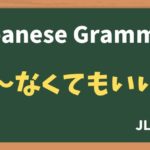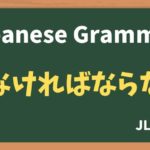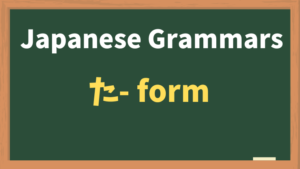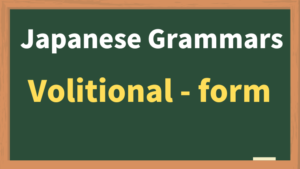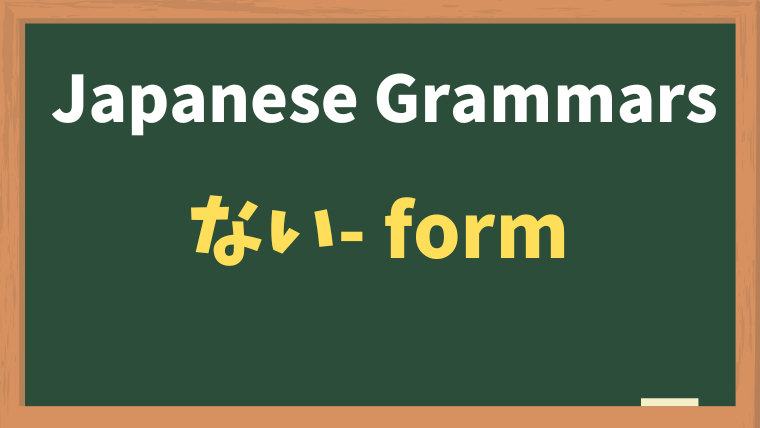
Contents
1. What is the ない-Form?
The ない-form is a negative form used to indicate that an action is not performed. It’s similar to saying "don't" or "won't" in English. The ない-form is the foundation of many negative expressions in Japanese, such as casual negative statements and various grammar patterns that use negation.
2. How to Form the ない-Form for Each Verb Group
Here are two ways to create the ない-form, depending on whether you’re starting with the dictionary form or the ます form.
Method 1: Forming the ない-Form from the Dictionary Form (e.g., のむ)
For learners familiar with the dictionary form, here’s how to conjugate each verb group into the ない-form:
- Group 1 (U-Verbs):
- Change the final “u” sound to “a” and add ない.
- Examples:
- のむ → のまない (do not drink)
- かく → かかない (do not write)
- はなす → はなさない (do not speak)
- Exception: For verbs ending in う, change to わ before adding ない (e.g., 買う → 買わない).
- Group 2 (RU-Verbs):
- Simply remove る and add ない.
- Examples:
- たべる → たべない (do not eat)
- みる → みない (do not see)
- Group 3 (Irregular Verbs):
- する becomes しない (do not do).
- くる becomes こない (do not come).
Method 2: Forming the ない-Form from the ます Form (e.g., のみます)
For learners who studied the ます form first, here’s how to identify the ない-form from the ます form:
For learners who learned the ます form first:
- Group 1 (U-Verbs):
- If the verb ends in 〜い before ます: Change い to あ and add ない.
- Examples:
- のみます → のまない (do not drink)
- かきます → かかない (do not write)
- はなします → はなさない (do not speak)
- Group 2 (RU-Verbs):
- Simply remove ます and add ない.
- Examples:
- たべます → たべない (do not eat)
- みます → みない (do not see)
- Group 3 (Irregular Verbs):
- します becomes しない.
- きます becomes こない.
This method makes it easy to transform verbs from their familiar ます form into the negative ない-form.
3. Sample Sentences
Here are some examples of the ない-form in action.
- Group 1 (U-Verbs):
- のむ (to drink) → のまない: コーヒーを のまない。
(I don’t drink coffee.)
- のむ (to drink) → のまない: コーヒーを のまない。
- Group 2 (RU-Verbs):
- たべる (to eat) → たべない: あさごはんを たべない。
(I don’t eat breakfast.) - みる (to see) → 見ない: その えいがを みない。
(I don’t watch that movie.)
- たべる (to eat) → たべない: あさごはんを たべない。
- Group 3 (Irregular Verbs):
- する (to do) → しない: しゅくだいを しない。
(I’m not doing my homework.) - くる (to come) → こない: ともだちは こない。
(My friend isn’t coming.)
- する (to do) → しない: しゅくだいを しない。
4. Common Uses of the ない-Form
The ない-form has a variety of practical uses in Japanese. Here are a few common ones:
- Expressing Simple Negation:
The most straightforward use of the ない-form is to simply state that you do not do something.- Example: あさごはんを たべない。 (I don’t eat breakfast.)
- Asking Negative Questions:
The ない-form can be used in questions to gently ask if someone doesn’t want to do something.- Example: えいがを みない? (Don’t you want to watch the movie?)
- Using with 〜なければならない (must):
The ない-form is essential in expressions like 〜なければならない to indicate necessity or obligation.- Example: しゅくだいを しなければならない。 (I must do my homework.)
- Using with 〜なくてもいい (don’t have to):
This structure indicates that something is not necessary.- Example: きょうは べんきょうしなくてもいい。 (I don’t have to study today.)
Each of these uses makes the ない-form a versatile tool for expressing negation, obligations, and gentle suggestions in Japanese.

